Director of the News Bureau of the State Council Information Office and spokesperson Life Xiaoli:
Good morning, ladies and gentlemen. Welcome to the press conference of the State Council Information Office. Today, we are very pleased to invite Mr. Pan Gongsheng, President of the People's Bank of China, Mr. Li Yunze, Director of the General Administration of Financial Supervision, and Mr. Wu Qing, Chairman of the China Securities Regulatory Commission to introduce to you the high-quality development of the financial economy and answer your concerns. Next, let's first invite Mr. Pan Gongsheng to give an introduction.
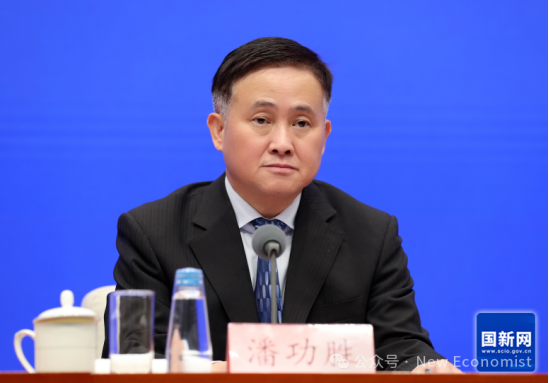
Pan Gongsheng, President of the People's Bank of China:
Thank you, Director Shou Xiaoli. Good morning, journalists! I am very pleased to meet you all again. Thank you for your long-term attention and support to the reform and development of the financial industry and the various work of the People's Bank of China!
Since the beginning of this year, the People's Bank of China has adhered to the fundamental purpose of providing financial services to the real economy, and has maintained a supportive monetary policy stance and direction. It has implemented significant monetary policy adjustments three times in February, May, and July.
In terms of the total amount of monetary policy, various monetary policy tools such as lowering the reserve requirement ratio, lowering policy interest rates, and guiding the downward trend of loan market quoted interest rates are comprehensively used to create a favorable monetary and financial environment.
In terms of the structure of monetary policy, we focus on key links of high-quality development, establish re loans for technological innovation and technological transformation, and increase financial support for technological innovation and equipment upgrading. Reduce the down payment ratio and mortgage interest rate of mortgage loans, lower the interest rate of housing provident fund loans, and establish a guarantee housing refinancing system to accelerate the destocking of existing commercial housing through market-oriented means.
In terms of the transmission of monetary policy, we will promote the reform of the quarterly value-added accounting method in the financial industry, which has changed from the previous calculation method mainly based on the growth rate of deposits and loans to the income based accounting method. We will rectify and standardize manual interest payments and idle funds, activate inefficient financial resources, improve the efficiency of fund utilization, and enhance the transmission efficiency of monetary policy.
In terms of exchange rates, we must adhere to the decisive role of the market in the formation of exchange rates, maintain exchange rate elasticity, strengthen expectation guidance, and maintain the basic stability of the RMB exchange rate at a reasonable and balanced level.
The effectiveness of monetary policy continues to show, with social financing scale increasing by 8.1% year-on-year at the end of August, RMB loans increasing by 8.5% year-on-year, about 4 percentage points higher than nominal GDP growth rate, and financing costs also at a historical low.
According to the central government's decision-making and deployment, in order to further support stable economic growth, the People's Bank of China will firmly adhere to a supportive monetary policy stance, increase the intensity of monetary policy regulation, improve the accuracy of monetary policy regulation, and create a favorable monetary and financial environment for stable economic growth and high-quality development.
Pan Gongsheng:
With today's press conference, I announce the following policies:
Firstly, reduce the reserve requirement ratio and policy interest rate, and drive down the market benchmark interest rate. Secondly, reduce the interest rate of existing housing loans and unify the minimum down payment ratio for housing loans. Thirdly, create new monetary policy tools to support the stable development of the stock market.
It is to lower the reserve requirement ratio and policy interest rate. In the near future, the reserve requirement ratio will be lowered by 0.5 percentage points, providing long-term liquidity of about 1 trillion yuan to the financial market; Within this year, depending on the market liquidity situation, the reserve requirement ratio may be further lowered by 0.25-0.5 percentage points at an appropriate time. Reduce the policy interest rate of the central bank, namely the 7-day reverse repo operation rate, by 0.2 percentage points, from the current 1.7% to 1.5%. At the same time, guide the loan market quotation rate and deposit rate to decline synchronously, and maintain the stability of the net interest margin of commercial banks.
Secondly, reduce the interest rate of existing housing loans and unify the minimum down payment ratio for housing loans. Guiding commercial banks to lower the interest rate of existing housing loans to near the interest rate of newly issued loans, with an expected average decrease of about 0.5 percentage points. Standardize the minimum down payment ratio for first and second home mortgages, and lower the national minimum down payment ratio for second home loans from the current 25% to 15%. The central bank's funding support ratio for the 300 billion yuan guaranteed housing refinancing established by the People's Bank of China in May will be increased from 60% to 100%, enhancing market-oriented incentives for banks and acquisition entities. Extend the two policy documents of operating property loans due before the end of the year and the "Financial 16 Measures" until the end of 2026. Originally, these two documents were due to expire at the end of this year. Together with the State Administration for Financial Regulation, we have extended these two documents until the end of 2026.
Thirdly, create new monetary policy tools to support the stable development of the stock market. The first policy is to establish a convenient exchange system for securities, funds, and insurance companies, supporting eligible securities, funds, and insurance companies to obtain liquidity from the central bank through asset pledge. This policy will significantly enhance institutions' ability to obtain funds and increase their stock holdings. The second item is to create a special refinancing for stock repurchase and increase holdings, guiding banks to provide loans to listed companies and major shareholders to support stock repurchase and increase holdings.
We will soon publish policy documents or announcements on the website of the People's Bank of China, one by one, regarding the policy measures just introduced.
Let me briefly introduce these first. I will also answer questions of concern with Director Li Yunze and Chairman Wu Qing later. thank you!
Shou Xiaoli: Thank you, President Pan. Next, let Director Li Yunze give an introduction.
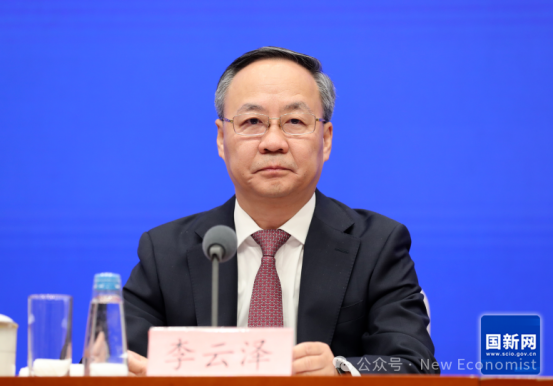
Li Yunze, Director of the State Administration for Financial Regulation:
Thank you, Director Shou Xiaoli. Good morning, media friends. It's a pleasure to meet you all. Firstly, on behalf of the State Administration for Financial Regulation, I would like to express my sincere gratitude to all media friends for their long-term support and assistance in financial regulatory work.
Since the beginning of this year, the State Administration for Financial Regulation has resolutely implemented the major decisions and deployments of the Party Central Committee and the State Council, taken proactive measures without taking refuge, and coordinated the promotion of the three key tasks of risk prevention, strong supervision, and development. Solid steps have been taken in all work.
In terms of risk prevention, we focus on key areas, continue to promote risk reduction work, and strive to create a safe and stable financial environment for economic development. According to the deployment of the Central Financial Work Conference, actively promote the reform of small and medium-sized financial institutions into insurance, and resolutely avoid risk spillover and transmission. At present, specific reform insurance plans have been formed in areas where high-risk institutions gather, and are being steadily and orderly implemented in a "one province, one policy" manner. At the same time, we also guide banks and insurance institutions to actively cooperate in resolving real estate and local government debt risks. Currently, China's financial industry, especially large financial institutions, operates steadily with controllable risks. With the gradual resolution and mitigation of the three major risks in real estate, local government bonds, and small and medium-sized financial institutions, financial risks are steadily converging. We will firmly adhere to the bottom line of preventing systemic financial risks from occurring.
In terms of strong regulation, we adhere to addressing both the symptoms and root causes, solving problems through reform, promoting norms through systems, and continuously enhancing the industry's sustainable development capabilities. Guide the banking and insurance industries to return to their roots, focus on their main businesses, and achieve differentiated development and complementary advantages. Promote the introduction of new "National Ten Measures" for the insurance industry, timely improve asset management regulations, continuously strengthen the governance of non bank institutions, optimize and consolidate credit infrastructure management, and promote the resolution of deep-seated problems that constrain the sustainable and healthy development of the industry. Guide financial institutions to optimize their layout, hone their internal skills, and actively respond to the narrowing of net interest margin and the risk of interest margin losses. Focus on preventing and controlling substantive risks, effectively implement the due diligence exemption system, and seriously investigate and punish major illegal and irregular behaviors, creating a fair and just market order.
In terms of promoting development, we focus on breaking through bottlenecks, improving economic and financial adaptability, and increasing financial services to key areas and weak links. Strengthen the financing guarantee for the "dual" and "two new" industries, and vigorously support the development of new quality productive forces according to local conditions. As of the end of August this year, loans for high-tech industries and medium - to long-term loans for manufacturing industries increased by 13.2% and 15.9% year-on-year, respectively. Promote the incremental expansion of small and micro loans, and increase support for private enterprises without discrimination. Inclusive small and micro enterprise loans and private enterprise loans increased by 16.1% and 9.1% respectively year-on-year. Guide insurance institutions to make every effort to provide compensation services for major accidents, rainstorm, typhoon and other natural disasters, and help the affected people and business entities overcome difficulties. In the first eight months of this year, the insurance industry has cumulatively paid out 1.55 trillion yuan, a year-on-year increase of 26.1%.
Next, the State Administration for Financial Regulation will actively strengthen communication and exchange with the market and media friends, and respond to social concerns in a timely manner. Just now, President Pan has given a briefing and introduction on policy adjustments. Regarding the optimization and improvement of regulatory policies, I will have a specific exchange with you during the Q&A session later. We will strive to create a stable, transparent and predictable regulatory policy environment, continue to make efforts and become more awesome, constantly improve the quality and efficiency of serving the real economy, and contribute more financial power to high-quality development. thank you.
Shou Xiaoli:
Thank you for Director Li's introduction. Now let's invite Chairman Wu Qing to give an introduction.
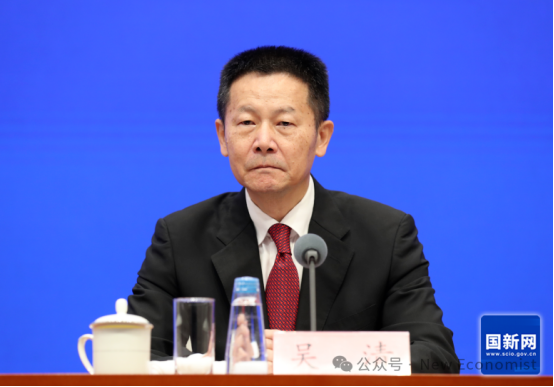
Chairman of China Securities Regulatory Commission Wu Qing:
Good morning, ladies and gentlemen, friends from the media. First of all, thank you very much for your long-term concern and support for the capital market, as well as your concern and support for the work of the China Securities Regulatory Commission. In order to implement the spirit of the Central Financial Work Conference, the State Council issued the new "National Nine Measures" in April this year. We have conscientiously implemented it, formulated several supporting documents in conjunction with relevant parties, and revised more than 50 institutional rules, forming a "1+N" policy rule system together with the new "National Nine Articles". A number of key measures are also being implemented, and preliminary results have been achieved in strengthening supervision, risk prevention, and promoting high-quality development of the capital market.
Firstly, the market ecology has further improved. Adhering to the supervision of "long teeth with thorns" and sharp edges, the State Council forwarded the opinions of five ministries including the China Securities Regulatory Commission on further improving the comprehensive punishment and prevention of financial fraud in the capital market. By the end of August, 577 cases of securities and futures violations had been investigated and dealt with, especially some important cases such as Evergrande Real Estate and China National Nuclear Corporation Titanium Dioxide, and the Ministry of Finance severely investigated and punished Evergrande Real Estate audit firm PwC, forming a strong deterrent.
The second is to accelerate the improvement of the basic market system. Optimize the institutional rules for various stages such as issuance and listing, dividend distribution, reduction of holdings, and trading. The dividends of listed companies in 2023 reached a historical high of 2.2 trillion yuan. Strengthen the supervision of programmatic trading and suspend securities lending business. Deepen the reform of public fund fee rates and promote industry institutions to prioritize functional construction.
The third is to maintain the basic functioning of the market. Overcoming many difficulties, we have maintained an appropriate pace for IPO and refinancing. Continuously improve the quality and efficiency of filing management for overseas listings. Steadily leverage the functions of the bond and futures markets. In the first 8 months, the exchange bond market issued various types of bonds worth 8.9 trillion yuan, maintaining steady growth.
The fourth is to firmly promote the reform and innovation of the capital market. Around the five major articles on finance, a series of policy measures have been released and implemented, including the "Sixteen Articles" on capital market services for technology enterprises and the "Eight Articles" on the Science and Technology Innovation Board, to support the development of venture capital. To better leverage the role of mergers and acquisitions, nearly 50 major restructuring cases have been disclosed in the entire market since May this year, and the market response has been relatively positive.
The Third Plenum of the 20th Central Committee of the Communist Party of China has made strategic arrangements for further deepening the comprehensive reform of the capital market. The CSRC will adhere to strengthening the foundation, strict supervision and strict management, promote development and maintain stability through reform, constantly improve the capital market function of investment and financing coordination, and better serve Chinese path to modernization. Focus on the "three highlights": first, highlight the enhancement of the inherent stability of the capital market. Establish a clear orientation towards rewarding investors and improve the quality and investment value of listed companies. Accelerate investment reform and promote the construction of a policy system for long-term investment. We will release guidance on promoting the entry of medium and long-term funds into the market. We will further improve our policy toolbox and firmly guard the bottom line of risks. The second is to highlight the recovery and improvement of the real economy and the high-quality development of the economy. Focusing on key areas such as serving new quality productivity, we will make good use of various capital market tools such as stocks, bonds, and futures, and take multiple measures to activate the M&A and restructuring market. We will also release six measures to promote M&A and restructuring. At the same time, we will strive to work with all parties to facilitate the circulation of various links in the "fundraising, investment management, and withdrawal" of private equity venture capital funds. The third is to highlight the protection of the legitimate rights and interests of small and medium-sized investors. Resolutely crack down on illegal and irregular behaviors such as financial fraud and market manipulation, and strive to implement more exemplary cases in areas such as representative litigation and advance compensation.
I will briefly introduce these to everyone first, and then continue to communicate with you later. thank you.
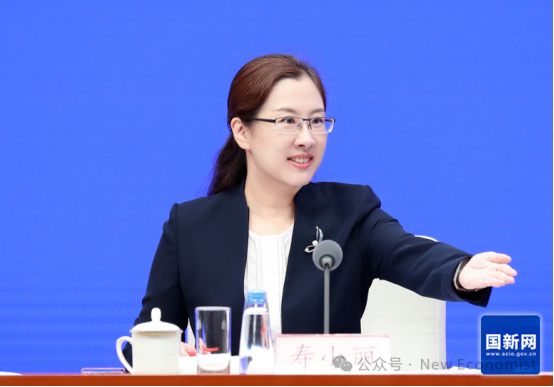
Shou Xiaoli:
Thank you, Chairman Wu. Next, let's move on to the question and answer session. Before asking, please inform us of your news organization. Please start asking questions.
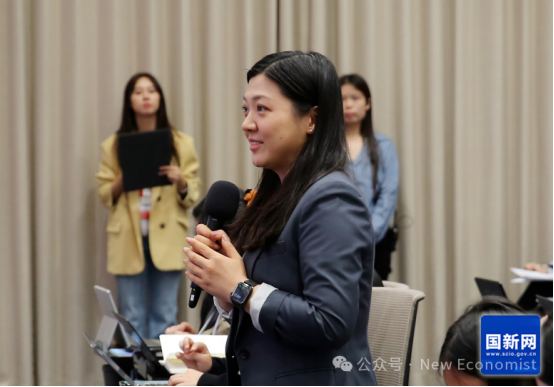
CCTV reporter:
We know that since the beginning of this year, the People's Bank of China has implemented three significant monetary policy adjustments. Just now, President Pan mentioned that the next step will be to continue lowering the reserve requirement ratio and policy interest rates. These aggregate policies will play an important role in stabilizing growth, so everyone is paying close attention to them. Could you please explain in detail to everyone again? thank you.
Pan Gongsheng:
The overall amount of monetary policy is also a matter of great concern to the entire society and market. I have repeatedly stated on different occasions that the People's Bank of China adheres to a supportive monetary policy stance, increases the intensity of monetary policy regulation, and improves the accuracy of monetary policy regulation. We have used a combination of various monetary policy tools to support the stable growth of the real economy. In the process of designing and adjusting monetary policy tools, the People's Bank of China has several important considerations: the first factor is to support the stable growth of the Chinese economy; The second factor is at the price level, which is also an important consideration in designing monetary policy tools. We need to promote a moderate rebound in prices; The third factor is that we need to strike a good balance between supporting the growth of the real economy and the health of the banking industry itself; The fourth factor is the exchange rate, which needs to maintain the basic stability of the RMB exchange rate at a reasonable and balanced level. Additionally, we emphasize the coordination between monetary and fiscal policies, and support proactive fiscal policies to achieve better results.
I mentioned several specific macro policies and adjustments to the monetary aggregate policy in my opening remarks, and now I will elaborate on them in detail.
Firstly, regarding the reduction of the reserve requirement ratio. In February of this year, we lowered the reserve requirement ratio by 0.5 percentage points. This time, we plan to further reduce the reserve requirement ratio by 0.5 percentage points, which can provide long-term liquidity of about 1 trillion yuan to the financial market. At present, the weighted average reserve requirement ratio for financial institutions is 7%. Among them, the current rate for large banks is 8.5%, and after this change, it will decrease from 8.5% to 8%; Medium sized banks are currently at 6.5%, and after this change, it will be reduced from 6.5% to 6%; Rural financial institutions had already implemented a 5% reserve requirement ratio a few years ago, but this time it is not within the scope of adjustment. After the implementation of the reserve requirement ratio reduction policy, the average reserve requirement ratio of the banking industry is about 6.6%, which still has some room for improvement compared to the central banks of major economies internationally. On the tool of reserve requirement ratio, there are still three months before the end of the year, and we may further lower it by 0.25-0.5 percentage points depending on the situation.
Secondly, regarding the reduction of policy interest rates. At present, the 7-day reverse repo rate in the open market is the main policy rate of the central bank. In July, we lowered the 7-day reverse repo rate from 1.8% to 1.7%. This time, it has decreased by 20 points, from 1.7% to 1.5%. Under the market-oriented interest rate regulation mechanism, the adjustment of policy interest rates will drive the adjustment of various market benchmark interest rates. It is expected that after this policy interest rate adjustment, the Medium Term Lending Facility (MLF) interest rate will be lowered by about 0.3 percentage points, and the loan market quoted rate (LPR), deposit rate, etc. are also expected to decrease by 0.2 to 0.25 percentage points.
The impact of this interest rate adjustment on the bank's net interest margin remains generally neutral. Lowering the interest rate of existing housing loans will reduce the interest income of banks, but it will also reduce customers' early repayment. The central bank's reserve requirement ratio reduction is equivalent to providing banks with low-cost, long-term capital operations directly. Medium term lending convenience and open market operations are the main ways for the central bank to provide commercial banks with medium - and short-term funds. The decrease in interest rates will also reduce banks' funding costs. In addition, as mentioned earlier, it is expected that the loan market quoted interest rate and deposit interest rate will symmetrically decline. The repricing effect formed by guiding the downward trend of deposit interest rates through the interest rate self-discipline mechanism in the previous few times will accumulate and become apparent. Because the repricing of deposit interest rates is slower than that of loans, the previous attempts to guide deposit interest rates downward will have a cumulative effect over time. So in the design of the policy adjustment plan, the technical team of the People's Bank of China has conducted multiple rounds of careful quantitative analysis and evaluation. The impact of this interest rate adjustment on the bank's income is neutral, and the bank's net interest margin will remain basically stable. thank you!

China Securities Journal reporter:
The Third Plenary Session of the 20th Central Committee of the Communist Party of China proposed to improve the capital market function that coordinates investment and financing, and support the entry of long-term funds into the market. The relevant parties have also been calling for and promoting long-term investment and value investment. How can we better promote the entry of medium and long-term funds into the market and promote the balance of investment and financing in the next step?
Wu Qing:
I will answer this question. Long money is indeed very important. The high degree of specialization and strong stability in the operation of medium and long-term capital investment are of great significance for overcoming short-term market fluctuations and playing the role of a "stabilizer" and "ballast" in the capital market. In recent years, the China Securities Regulatory Commission has vigorously promoted the development of equity public funds and, together with relevant parties, has continued to promote the entry of medium and long-term funds into the market, achieving some phased results. By the end of August this year, professional institutional investors such as equity public funds, insurance funds, and various pension funds held a total A-share market value of nearly 15 trillion yuan, more than doubling from the beginning of 2019, and accounting for 22.2% of the A-share market value, up from 17%. One of the most prominent ones is the National Social Security Fund. Since the establishment of the National Social Security Fund, the average annualized return on investment in the domestic stock market has reached over 10%, becoming a model for long-term and value investing in the A-share market.
At the same time, we also see that the current capital market still faces prominent problems such as insufficient long-term funding, poor structure, and insufficient leading role, and the institutional environment of "long-term investment" has not yet been fully formed. In order to implement the spirit of the Third Plenary Session of the 20th Central Committee of the Communist Party of China and further overcome the pain points and obstacles of medium and long-term capital entering the market, with strong support from relevant departments, the China Securities Regulatory Commission and other relevant departments have recently formulated the "Guiding Opinions on Promoting Medium and Long term Capital Entering the Market", which will be issued soon. There are a series of arrangements to support the entry of medium and long-term funds into the market, and we believe that the institutional environment will continue to be optimized. Overall, the goal is to promote the entry of medium - and long-term funds into the market with the aim of "growing more money, growing longer money, and achieving better returns". The upcoming Guiding Opinions highlight three measures:
One is to vigorously develop equity public funds. The key is to urge fund companies to further rectify their business philosophy, adhere to the investor return orientation, focus on improving their investment research and service capabilities, create more products that meet the needs of the people, and strive to create long-term returns for investors. Recently, you may have also noticed that 10 new CSI A500ETFs have been issued, which are very popular in the market and quickly reached the fundraising limit. Next, we will further optimize the registration of equity fund products, vigorously promote the innovation of index based products such as broad-based ETFs, and timely launch more small and medium-sized ETF fund products including the ChiNext and Science and Technology Innovation Board to better serve investors, national strategies, and the development of new quality productivity. In addition, we will promote the steady reduction of comprehensive fees in the public fund industry, which has been a topic of much discussion recently. We have already taken two steps and there is still one more step ahead. By steadily reducing the comprehensive fee rate, we can better benefit and reward investors.
Secondly, we need to improve the institutional environment for 'long-term investment'. The key is to improve the regulatory inclusiveness of medium - and long-term capital equity investments, and fully implement long-term assessments of more than 3 years. Open up institutional barriers that affect long-term investment of insurance funds, promote insurance institutions to become firm value investors, and provide stable long-term investment for the capital market. At the same time, we will guide the multi-level and multi pillar pension security system to interact positively with the capital market, improve the investment policy system of the national social security fund and basic pension insurance funds, and encourage enterprise annuity funds to explore different types of differentiated investments based on the age and risk preferences of their holders.
Thirdly, continuously improve the capital market ecosystem. The key is to take multiple measures to improve the quality and investment value of listed companies, improve the supporting institutional arrangements for institutional investors to participate in the governance of listed companies, and severely crack down on various illegal and irregular behaviors, shaping a good market ecology for medium and long-term funds that are willing to come, can be retained, and develop well.
Next, we will work together with relevant departments and units to increase the promotion of work and ensure that all measures can be implemented and put into practice. thank you.
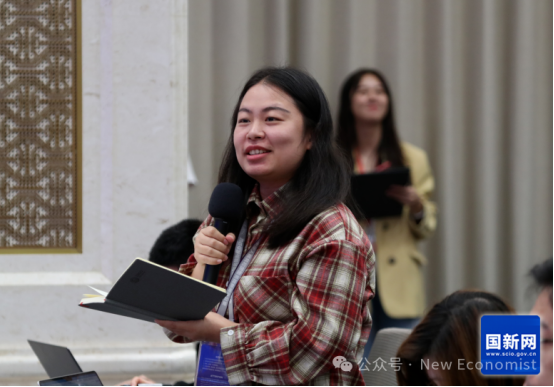
21st Century Business Herald reporter:
What measures will the financial regulatory authorities take in the near future to promote the stable operation of large commercial banks in the financial system? In June of this year, the State Council issued the "Several Policy Measures to Promote the High Quality Development of Venture Capital", proposing to expand the pilot scope of equity investment in financial asset investment companies under large banks. What relevant implementation measures have been taken?
Li Yunze:
Thank you for your question, I will answer it. Indeed, as you mentioned earlier, large commercial banks are the main force serving the real economy in China's financial system and also the cornerstone for maintaining financial stability. Currently, large commercial banks are operating steadily with stable asset quality, and their main regulatory indicators are in a "healthy range". As we all know, capital is the "capital" for financial institutions to operate, the foundation for enhancing their ability to serve the real economy, and the barrier to resist risks. In recent years, large commercial banks have mainly relied on retaining their own profits to increase capital. However, with the increasing efforts of banks to reduce fees and make concessions, the net interest margin has narrowed and the profit growth rate has gradually slowed down. It is necessary to coordinate various internal and external channels to enrich capital. In order to consolidate and enhance the ability of large commercial banks to operate and develop steadily, and better play their role as the main force serving the real economy, after research, the state plans to increase core tier one capital for six large commercial banks, which will be implemented in an orderly manner according to the idea of "coordinated promotion, phased and phased, and one bank, one policy". We will also continue to urge large commercial banks to improve their level of refined management and strengthen their ability for high-quality development under capital constraints.
Currently, indirect financing still holds a dominant position in China's total social financing, which means that we need to embark on a development path of technology finance, especially innovation investment, with Chinese characteristics. In the early stage, financial asset investment companies under large commercial banks have launched equity investment pilot projects in Shanghai, exploring paths, accumulating experience, and training teams, and have the conditions to expand the pilot projects. According to the relevant deployment of the State Council, in order to effectively play the leading and driving role of the pilot program and encourage the development of venture capital, we plan to take the following three measures to promote it: first, expand the scope of pilot cities. We will work with relevant departments to expand the pilot scope from Shanghai to 18 large and medium-sized cities with active technological innovation, including Beijing. The second is to relax restrictions. Moderately relax the restrictions on the amount and proportion of equity investment, increase the proportion of on balance sheet investment from 4% to 10%, and increase the proportion of investment in a single private fund from 20% to 30%. The third is to optimize the assessment. Guide relevant institutions to implement the requirement of due diligence exemption, establish and improve long-term and differentiated performance evaluation. Next, we will promptly summarize our experience and continue to study expanding the scope of pilot cities; At the same time, continuously optimize supporting policies and actively promote more projects to be implemented as soon as possible.
That's all for my answer, thank you everyone.
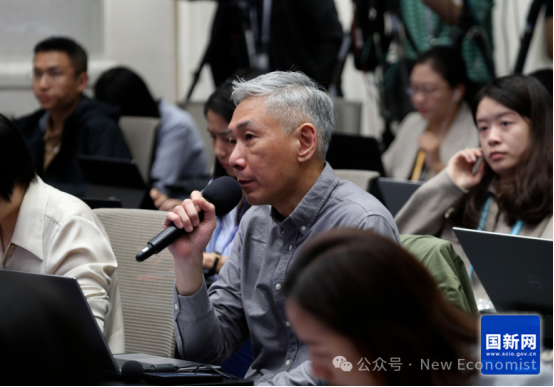
Reuters reporter:
Despite many policies introduced by the Chinese government to attract homebuyers and reduce the loan burden on homeowners, housing prices in China continue to decline, with some cities experiencing double-digit declines in total housing prices. May I ask, do Chinese financial regulatory agencies believe that it is time for monetary policy to be introduced? thank you.
Pan Gongsheng:
Thank you for your question. This is a very good question and also a widely concerned issue in society. We mainly support the risk resolution and healthy development of the real estate market from a financial perspective based on our own responsibilities. In recent years, the People's Bank of China has continuously improved its macro prudential policies for real estate finance, implementing comprehensive policies from both the supply and demand sides. It has repeatedly lowered the minimum down payment ratio for personal housing loans, lowered loan interest rates, canceled the lower limit of interest rate policies, and established a series of policies such as re lending for affordable housing to support the acquisition of inventory commercial housing. In order to implement the central government's decision and deployment on promoting the stable and healthy development of the real estate market, the People's Bank of China, together with the State Administration for Financial Regulation, has issued five new policies on real estate finance.
The first policy is to guide banks to lower the interest rates on existing housing loans. In August last year, the People's Bank of China promoted commercial banks to orderly reduce the interest rates of existing housing loans, and the effect was quite good. After the policy lower limit of national housing loan interest rates was lifted on May 17th this year, there was originally a policy lower limit for mortgage loans based on the LPR, but in the new housing loan policy on May 17th, we cancelled this lower limit. The new loan interest rate was further reduced from the market quoted interest rate, and the interest rate level dropped significantly, once again widening the interest rate spread between new and old housing loans. Especially in big cities such as Beijing, Shanghai, Shenzhen, and Guangzhou, the original increase in points was relatively high. After that adjustment, the interest rate difference between newly issued mortgage loans and existing mortgage loans was even greater. In response, the People's Bank of China plans to guide banks to make bulk adjustments to the interest rates of existing housing loans, lowering the interest rates of existing housing loans to near the interest rates of newly issued loans. We expect the average decrease to be around 0.5 percentage points. The reason why it is said to be average is because loans are issued at different times, in different regions, and by different banks, with varying levels of interest rates for existing housing loans. Our predicted decline is an expected average. Lowering the interest rates of existing housing loans by banks is conducive to further reducing the interest expenses of borrowers. We expect that this policy will benefit 50 million households and 150 million people, reducing the total annual interest expenses of households by about 150 billion yuan. This will help promote the expansion of consumption and investment, reduce early repayment behavior, and also compress the space for illegal replacement of existing housing loans, protect the legitimate rights and interests of financial consumers, and maintain the stable and healthy development of the real estate market.
We will officially release this document soon. Because there are many borrowers involved, the bank also needs some time to make necessary technical preparations. It is estimated that the bank will be difficult to handle this matter for you immediately, so please do not go to the bank this afternoon. Next, we are also considering guiding commercial banks to improve the pricing mechanism for mortgage loans, with dynamic adjustments made through independent negotiations between banks and customers based on market-oriented principles.
The second policy is to unify the minimum down payment ratio for mortgage loans to 15%. In order to better support the rigid and diversified housing needs of urban and rural residents, commercial personal housing loans at the national level will no longer distinguish between first and second homes, and the minimum down payment ratio will be unified at 15%. After May 17th, the proportion of first-time home buyers has already reached 15%, while the proportion of second home buyers was 25%. This time, the proportion of first-time and second home buyers will be unified at 15%. I would like to clarify two points here. Each region can adopt differentiated arrangements and determine the minimum down payment ratio within its jurisdiction based on its own policies. Due to the large size of the country, the real estate market situation varies greatly between different cities and regions. Local governments can adopt differentiated arrangements and determine the minimum down payment ratio limit within their jurisdiction based on the national bottom line. Additionally, commercial banks negotiate with customers to determine the specific down payment ratio based on their risk profile and willingness. Because 15% is only a minimum down payment ratio, commercial banks need to assess customer risk, which may be higher than this level. Some customers also say that they have money and can pay a 30% down payment ratio. This is a market-oriented negotiation between commercial banks and individuals.
The third policy is to extend the deadline of two real estate financial policy documents. In the early stage, the People's Bank of China and the State Administration for Financial Regulation issued two policies, namely the "16 Financial Measures" and operational property loans, which played a positive role in promoting the stable and healthy development of the real estate market and resolving market risks. Among them, the phased policies of extending the existing financing of real estate enterprises and operating property loans, which were originally due on December 31, 2024 according to the document, have been extended from December 31, 2024 to December 31, 2026, as decided by us and the State Administration for Financial Regulation.
The fourth policy is to optimize the policy of re lending for affordable housing. On May 17th, the People's Bank of China announced the establishment of a 300 billion yuan guarantee housing refinancing loan, guiding financial institutions to support local state-owned enterprises in purchasing unsold commercial housing at reasonable prices in accordance with market-oriented and rule of law principles, for use as allocation or rental guarantee housing. This is an important measure to reduce inventory in the real estate market. To further enhance market-oriented incentives for banks and acquiring entities, we will increase the proportion of the People's Bank of China's investment in the policy of re lending for affordable housing from 60% to 100%. Previously, commercial banks released 10 billion yuan and the People's Bank of China provided 6 billion yuan. Now, commercial banks release 10 billion yuan and the People's Bank of China provides low-cost funds of 10 billion yuan to accelerate the process of destocking commercial housing.
The fifth policy is to support the acquisition of existing land by real estate companies. On the basis of using some local government special bonds for land reserves, research is being conducted to allow policy banks and commercial banks to provide loans to support eligible enterprises in market-oriented land acquisition and purchase, activate existing land use, and alleviate the financial pressure on real estate enterprises. When necessary, the People's Bank of China can also provide refinancing support. We are still studying this policy together with the State Administration for Financial Regulation.
thank you!
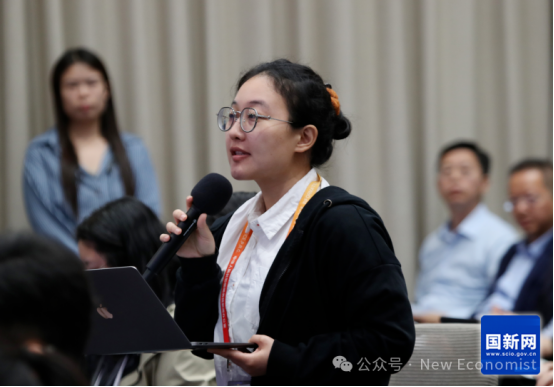
Beijing Youth Daily reporter:
Regarding small and micro enterprises. We have noticed that the government has recently introduced many supportive policies for financing small and micro enterprises, and financial institutions have also increased their service efforts. The financing of small and micro enterprises has shown a trend of increasing volume, expanding coverage, and stabilizing prices, but at the same time, some small and micro enterprises have also reflected that they still have bottlenecks and bottlenecks. I would like to know if the State Administration of Financial Supervision has any targeted measures in this regard? thank you.
Li Yunze:
Thank you for your question. Small and micro enterprises connecting thousands of households are an important force in stabilizing the economy, promoting employment, and improving people's livelihoods. In recent years, we have been working with the People's Bank of China to continuously strengthen policy guidance, collaborate with multiple parties to improve financing services for small and micro enterprises. As of the end of August this year, the balance of loans for inclusive small and micro enterprises in China has reached 31.9 trillion yuan, doubling from the end of 2017, and the average interest rate has also decreased by 3.5 percentage points. To further overcome the bottlenecks and bottlenecks in financing for small and medium-sized enterprises, the General Administration will focus on taking measures from two aspects:
Firstly, in conjunction with the National Development and Reform Commission, establish a working mechanism to support financing coordination for small and micro enterprises. This mechanism can be said to draw on the experience of the previous real estate financing coordination mechanism, and establish work teams at the county and district levels. The teams should "hold hands": hold hands with enterprises, carry out large-scale visits to thousands of households, deeply understand the business situation and actual difficulties of small and micro enterprises, especially comprehensively understand the financing needs of small and micro enterprises; Hand in hand with the bank, recommend small and micro enterprises that operate legally and compliantly, have genuine financing needs, and have good credit conditions to banking institutions. Banking institutions should promptly coordinate and, in principle, complete credit approval within one month to ensure that credit funds reach small and micro enterprises directly, truly driving the "last mile" of benefiting enterprises and the people.
The second aspect is to optimize the policy of non repayable loans for renewal. In 2014, the former China Banking Regulatory Commission issued a loan renewal policy for small and micro enterprises, commonly known as "Document No. 36", which clarified that eligible small and micro enterprises who still have financing needs after the loan expires can apply for loan renewal. That is to say, small and micro enterprise loans can continue financing without repaying the principal when they mature, and this business is also known as "no principal renewal". It should be said that this policy is highly welcomed by small and micro enterprises and has played a positive role in promoting their financing. We will further optimize the loan renewal policy from three aspects.
One is to expand the scope of loan renewal from some small and micro enterprises to all small and micro enterprises. Small and micro enterprises with real financing needs and financial difficulties after the loan expires can apply for loan renewal support if they meet the conditions.
The second is to temporarily expand the loan renewal policy to medium-sized enterprises, with a tentative term of three years. This means that for working capital loans of medium-sized enterprises due before September 30, 2027, the renewal policy for small and micro enterprises can be referred to.
The third is to adjust the risk classification standards, and renew loans for legally compliant, continuously operating, and creditworthy enterprises, without separately lowering the risk classification for loan renewal.
To ensure that the relevant support policies for credit to small and medium-sized enterprises are truly implemented, especially to address the concerns of grassroots credit personnel in carrying out credit business for small and medium-sized enterprises, the General Administration recently issued a due diligence exemption system for inclusive credit, refining the relevant situations of due diligence exemption, fully mobilizing the enthusiasm and initiative of grassroots staff, and striving to form a long-term mechanism of daring to lend, willing to lend, able to lend, and able to lend.
That's all I have to answer, thank you.
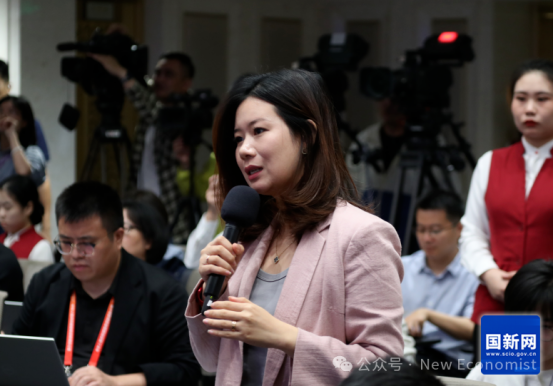
First Financial Journalist:
At the beginning of this year, we saw the establishment of a new urban real estate financing coordination mechanism and would like to know the latest progress and achievements? What other work considerations and new initiatives do we have for the next step? thank you.
Li Yunze:
Thank you for your question. Just now, President Pan actually gave a relatively systematic and comprehensive answer on this year's financial policies related to real estate, because the stable and healthy development of the real estate market is related to the overall economic and financial situation and the vital interests of the people. In recent years, there have been significant changes in the supply and demand relationship in China's real estate market. The continuous slowdown in sales has led to tight liquidity for real estate companies, and some projects that have been sold and are under construction are difficult to deliver on schedule. To address this issue, the General Administration and the Ministry of Housing and Urban Rural Development have established a coordination mechanism for urban real estate financing. The biggest feature of this mechanism is that it takes the city as the main body and projects as the center, distinguishing the risks of real estate enterprise groups from the construction of real estate projects, fully leveraging the coordinating role of local governments, including compliant ongoing and sold projects in the project "whitelist", guiding financial institutions to meet the reasonable financing needs of real estate projects, promoting project completion and delivery, and effectively safeguarding the legitimate rights and interests of the vast number of homebuyers.
With the joint efforts of all parties, the urban coordination mechanism has achieved good results. As of now, commercial banks have approved over 5700 "whitelist" projects, with approved financing amounts reaching 1.43 trillion yuan, supporting the timely delivery of over 4 million housing units. Driven by the coordination mechanism, financial institutions are continuously expanding their support for the real estate industry. As of the end of August, our real estate development loans this year have achieved positive growth compared to the beginning of the year, reversing the downward trend of real estate loans. Real estate merger and acquisition loans and housing rental loans also increased by 14% and 18% respectively, providing strong financial support for promoting the stable and healthy development of the real estate market.
At the same time, in order to actively support the demand for rigid and improved housing, President Pan just introduced that we will work with the People's Bank of China to guide various regions and financial institutions to adjust relevant real estate financial policies according to urban policies. Next, we will also cooperate with the People's Bank of China to actively promote the steady reduction of interest rates on existing housing loans, in order to further reduce residents' housing loan expenses and improve the sense of achievement of the people.
Next, we will resolutely implement the decisions and arrangements of the Party Central Committee and the State Council on real estate work, further promote the implementation and effectiveness of the urban real estate financing coordination mechanism, and effectively achieve the goals of "advancing as much as possible", "lending as much as possible", and "releasing as much as possible". We will resolutely win the battle to ensure the delivery of housing and promote the stable and healthy development of the real estate market. Thank you all.
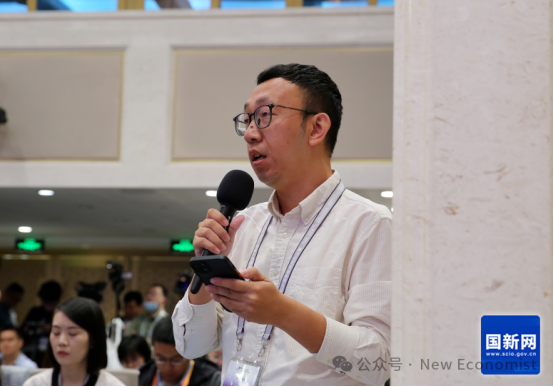
Red Star News reporter:
The current market is highly concerned about mergers and acquisitions of listed companies, and you just mentioned the need to take multiple measures to activate the M&A and restructuring market. In recent years, regulatory authorities have been promoting market-oriented reforms in mergers and acquisitions. May I ask what specific measures the China Securities Regulatory Commission will take next to better stimulate the efficiency and vitality of mergers and acquisitions in the capital market? thank you.
Wu Qing:
Thank you for your question. Mergers and acquisitions are indeed a major event in the capital market, and supporting corporate mergers and acquisitions to further promote effective resource allocation is a very important function of the capital market. Especially in the context of accelerating global industrial transformation and China's economic structural transformation and upgrading, it is urgent to play a key role in corporate mergers and acquisitions to help integrate industries and improve quality and efficiency. The new "National Nine Measures" have made important arrangements for the active merger and acquisition market. In order to further stimulate the vitality of the M&A and restructuring market, the China Securities Regulatory Commission has conducted extensive research and listened to the opinions of all parties in the previous stage, and formulated the six support measures for M&A mentioned earlier, namely the "Opinions on Deepening the Reform of the M&A and Restructuring Market of Listed Companies", adhering to the market-oriented direction and better playing the main channel role of the capital market in M&A and restructuring. The main contents of the opinions include:
One is to strongly support listed companies in transforming and upgrading towards new quality productivity. The China Securities Regulatory Commission will actively support listed companies to carry out mergers and acquisitions around strategic emerging industries, future industries, etc., including cross industry mergers and acquisitions based on transformation and upgrading goals, as well as unprofitable asset acquisitions that help to strengthen the chain and enhance key core technology levels, guiding more resource elements to cluster towards new quality productivity.
Secondly, actively encourage listed companies to strengthen industrial integration. China is the only country in the world with all industrial categories, and we also see that some industries are large but not strong, and many but not excellent. While supporting the development of new industries, the capital market will also continue to assist traditional industries in improving industrial concentration and resource allocation efficiency through restructuring. We will provide support for the integration needs between listed companies by significantly simplifying the audit procedures and other means. At the same time, private equity funds are encouraged to actively participate in mergers and acquisitions through arrangements such as lock up periods and reverse linkage.
The third is to further enhance regulatory inclusiveness. This has always been a concern in the market. The China Securities Regulatory Commission (CSRC) will further abide by the rules while respecting market, economic, and innovation laws. Regarding matters such as restructuring valuation, performance commitments, interbank competition, and related party transactions, the CSRC will further improve its inclusiveness based on actual situations, and better play the role of optimizing resource allocation in the market.
The fourth is to make great efforts to improve the trading efficiency of the restructuring market. The current payment tools available for restructuring are quite abundant, in addition to cash, there are also shares, convertible bonds, and so on. Next, the China Securities Regulatory Commission will support listed companies to adopt payment tools such as installment issuance of shares and convertible bonds, installment payment transaction consideration, and installment matching financing according to the specific needs of transaction arrangements, further improving transaction flexibility and capital utilization efficiency. At the same time, establish a simplified review procedure for restructuring, significantly simplify the review process, shorten the review time limit, and improve the efficiency of restructuring for eligible listed companies.
In addition, the active M&A and restructuring market cannot do without the function of intermediary structures. The China Securities Regulatory Commission will guide securities companies and other intermediary institutions to further improve their service levels, fully leverage their functions of transaction matching and professional services, and assist listed companies in implementing high-quality mergers and acquisitions. The China Securities Regulatory Commission will also carry out regulatory work in accordance with the law, crack down on various illegal and irregular behaviors, effectively maintain the order of the restructuring market, carry out restructuring in an orderly manner, and effectively protect the legitimate rights and interests of small and medium-sized investors.
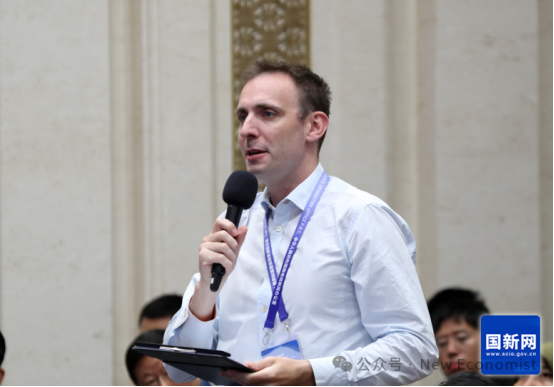
Reporter from the American International Market News Agency:
May I ask if the Federal Reserve's 50 basis point interest rate cut this month provides room for further easing of China's monetary policy? How does the People's Bank of China assess the impact of the Federal Reserve's interest rate cuts on China's foreign exchange market? thank you.
Pan Gongsheng:
Thank you for your question. Recently, the monetary policies of major economies have been adjusted, and as we can see, the pressure of RMB exchange rate depreciation has significantly eased, and it has shifted towards appreciation. On September 18th, the Federal Reserve cut interest rates by 50 basis points, marking the first time in the past few years that the Fed has been in a cycle of rate hikes. At the same time, some other central banks internationally, such as the European Central Bank, have already cut interest rates by 50 basis points twice since June, the Bank of England cut interest rates by 25 basis points in August, and central banks such as Canada and Sweden have also turned to interest rate cuts. Except for the Bank of Japan, the monetary policies of major economies have entered a cycle of interest rate cuts, and the momentum for the appreciation of the US dollar has weakened. The overall US dollar index has fallen, with a 3% drop since August and currently hovering around 101. With the convergence of the cyclical difference in domestic and foreign monetary policies, the external pressure on the basic stability of the RMB exchange rate has significantly eased. On September 23, the RMB exchange rate against the US dollar was around 7.05 yuan, and has appreciated by 2.4% since August.
Exchange rate is a comparative relationship between currencies, and its influencing factors are very diverse, such as economic growth, monetary policy, financial markets, geopolitics, sudden risk events, etc., all of which will have an impact on the exchange rate.
From an external perspective, the uncertainty of the external environment and the trend of the US dollar still exists due to the divergence of economic trends among countries, geopolitical changes such as the US presidential election, and fluctuations in the international financial market.
From the domestic situation in China, we believe that the RMB exchange rate still has a relatively stable and solid foundation.
From a macro perspective, the trend of economic stabilization and improvement will be further consolidated and strengthened. The People's Bank of China's relatively strong monetary policy this time will help support the real economy, promote household consumption, and boost market confidence.
Secondly, the international balance of payments remains relatively stable. The ratio of current account surplus to GDP in the first half of the year was 1.1%, which should be said to be within a relatively reasonable range.
Thirdly, the People's Bank of China and the State Administration of Foreign Exchange attach great importance to the construction of the foreign exchange market. Market participants are more mature, trading behavior is more rational, and the resilience of the market is significantly enhanced. In the first half of this year, the hedging ratio of import and export enterprises has reached 27%, and the proportion of cross-border settlement in goods trade using RMB accounts for 30%. These two numbers are not duplicated. If these two numbers are added together, it is equivalent to 50% of enterprises in foreign trade exports being less affected by exchange rate risk. As the People's Bank of China has repeatedly stated to the market, in the context of the two-way fluctuation of the RMB exchange rate, participants should also rationally view exchange rate fluctuations, enhance the concept of risk neutrality, and not "bet on the direction of the exchange rate" or "bet on unilateral trends". Enterprises should focus on their main business, and financial institutions should firmly serve the real economy.
The position of the People's Bank of China on exchange rate policy is clear and transparent. There are several key points: firstly, we adhere to the decisive role of the market in the formation of exchange rates and maintain exchange rate elasticity. Secondly, it is necessary to strengthen expectation guidance, prevent the formation of unilateral consistent expectations in the foreign exchange market and self realization, guard against the risk of exchange rate overshoot, and maintain the basic stability of the RMB exchange rate at a reasonable and balanced level.
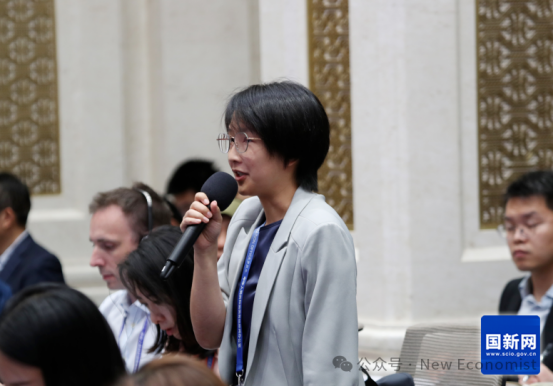
CNBC reporter:
Analysts believe that one of the reasons for the downward trend in China's treasury bond bond interest rate is the market's expectation of slower economic growth and loose monetary policy. May I ask, how did the central bank react? What corresponding measures will be taken? thank you.
Pan Gongsheng:
The discussion on this topic is currently relatively calm, and there has been a lot of speculation in the early stages. The People's Bank of China has also had multiple communications with the market in an appropriate manner. In the early period, the interest rate of China's treasury bond bonds declined. There were factors such as the People's Bank of China guiding the market interest rate downward through policy interest rates, the slow supply of government bonds in the early period, and some factors such as the weak risk awareness of financial institutions in small and medium-sized markets, driving the waves and herd effect. At present, China's long-term treasury bond yield hovers around 2.1%. The treasury bond yield level is the result of marketization. The People's Bank of China respects the role of the market. Undoubtedly, it has created a favorable monetary environment for China to implement proactive fiscal policies.
But we also need to recognize that interest rate risk is an important aspect of risk management for financial institutions. The case of Silicon Valley Bank in the United States is very meaningful, and everyone is well aware that such a risk event enlightens us that central banks need to observe and evaluate market risks from a macro prudential management perspective, and take appropriate measures to weaken and hinder risk accumulation. This is an important responsibility of central banks.
At present, as an important price signal, the yield curve of treasury bond still has some problems such as insufficient remote pricing and insufficient stability. The central bank gives a risk warning on the yield of long-term treasury bond and strengthens communication with the market in order to curb the herd effect, which may lead to the potential systemic risk of unilateral downward movement of the yield of long-term treasury bond.
Maintaining a good trading order in the bond market is also the responsibility of the central bank. Recently, the People's Bank of China has discovered some cases of price manipulation, account lending, and interest transfer in the bond market. We will increase the investigation and punishment of illegal and irregular behaviors in the interbank bond market, and timely publicize them to the society. In the early stage, the Trading Association has already made several cases public to the society, and we are currently investigating. Once the investigation is completed, we will announce it to the whole society.
In recent years, with the rapid development of China's financial market, the size and depth of the bond market have gradually increased, and the conditions for the central bank to buy and sell treasury bond through the secondary market and put in base currency have gradually matured. I have already announced our work plan to the society on the Lujiazui Forum on June 19th regarding this issue. At present, the People's Bank of China has incorporated the purchase and sale of treasury bond into the monetary policy toolbox, and has begun to try to operate. How we operate is very transparent, and the website of the People's Bank of China is publicly available. We are also working with the Ministry of Finance to study and optimize the rhythm, term structure and trusteeship system of treasury bond issuance. The whole process of the People's Bank of China's treasury bond bond trading in the secondary market will be gradual.
thank you!
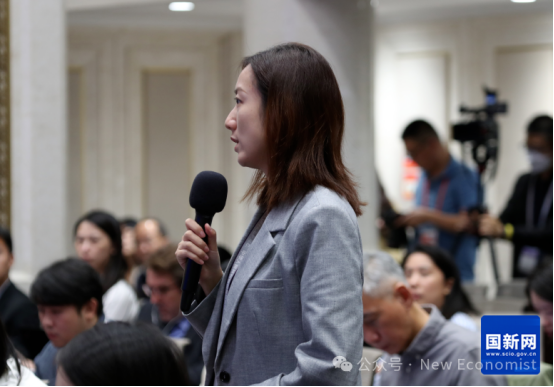
Phoenix TV reporter:
We have noticed that the new "National Nine Measures" issued this year have put forward clear requirements for listed companies to enhance their investment value and strengthen market value management. May I ask how the China Securities Regulatory Commission will promote related work in the next step? thank you.
Wu Qing:
Thank you for your question. Listed companies are the foundation of the market. Listed companies create value for investors and continuously return returns to them, only then can the capital market thrive and develop. The China Securities Regulatory Commission actively supports listed companies to improve their operational efficiency and profitability, and the State owned Assets Supervision and Administration Commission of the State Council is also increasing its assessment of the market value management of central state-owned listed companies in accordance with the "one enterprise, one policy" policy. Listed companies must strive to improve the transparency of information disclosure and the standardization of corporate governance, strengthen communication with investors, and comprehensively use methods such as dividends and repurchases to repay investors. Since the beginning of this year, more than 95% of listed companies have held performance briefings, 663 companies have announced mid-term dividends of 533.7 billion yuan, and over 1500 companies have actually implemented share repurchases totaling over 100 billion yuan.
To improve the quality of listed companies and enhance their investment value, listed companies must take responsibility effectively. At present, we have jointly studied and formulated guidelines for market value management of listed companies with relevant departments, requiring listed companies to do a good job in market value management in accordance with the law. One is to require the board of directors to attach great importance to investor protection and returns, and to strengthen the foundation of market value management by improving management level, enhancing profitability, and improving core competitiveness. The second requirement is for listed companies to actively use market value management tools such as mergers and acquisitions, equity incentives, and major shareholder increases to enhance investment value. Thirdly, it is required that listed companies establish a normalized repurchase mechanism arrangement, and encourage companies with conditions to plan and reserve funds in advance. The fourth requirement is for long-term net worth companies to develop value enhancement plans, evaluate implementation effects, and publicly disclose them to form market constraints. The fifth requirement is for major index component companies to take responsibility, establish market value management systems, clarify responsibilities and response measures, and regularly disclose their implementation status. It should be emphasized here that market value management must be strengthened, but at the same time, listed companies and related parties must raise compliance awareness and cannot engage in illegal and irregular activities such as market manipulation and insider trading under the guise of market value management.
We will recently solicit opinions on the market value management guidelines. At the same time, in conjunction with relevant departments, we will promote the establishment of a market-oriented incentive and restraint mechanism for share repurchases of listed companies, stimulate the endogenous motivation of major shareholders, executives and other relevant entities of listed companies, and further enhance the investment value of listed companies. thank you.
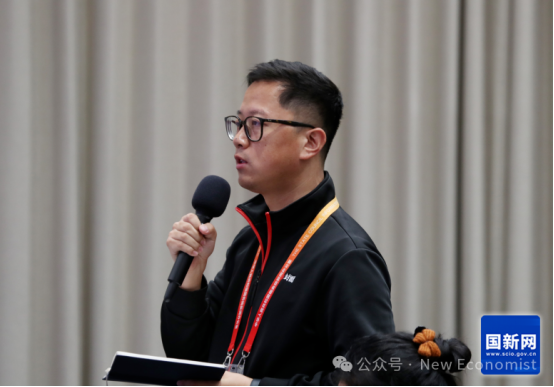
Cover News Reporter:
Insurance companies are important institutional investors in the capital market. Recently, the State Council issued the "Several Opinions on Strengthening Supervision, Preventing Risks, and Promoting High quality Development of the Insurance Industry", proposing to leverage the long-term investment advantages of insurance funds. May I ask what new measures the State Administration of Financial Regulation has taken to promote the pilot reform of long-term investment in insurance funds and support participation in capital market construction? thank you.
Li Yunze:
Thank you for your question. The State Council has just released a new "National Ten Measures" for insurance, which comprehensively deploys and systematically plans for the high-quality development of the insurance industry. China's insurance industry is ushering in a rare historic opportunity. It can be foreseen that in the future, China's insurance market will continue to expand, and the density and depth of insurance will continue to increase. Insurance funds have a large scale, long term, and stable source, naturally possessing the attribute of patient capital, and will become an important value investor to support the healthy and sustainable development of the capital market.
The capital market undoubtedly plays an important role in financial stability and economic development. The State Administration for Financial Regulation has always attached great importance to the capital market and actively guided banks, insurance and asset management institutions to maintain stability in the capital market. In the early stage, with the consent of the State Council, we promoted China Life Insurance and Xinhua Life Insurance to carry out pilot projects, jointly launched the establishment of private equity investment funds, and raised insurance funds to invest in the capital market. The registered capital of the fund is 50 billion yuan, and it has officially started investment and operation. Currently, the progress is smooth.
Next, we will continue to support the sustained and steady development of the capital market. One is to expand the pilot reform of long-term investment of insurance funds, support other eligible insurance institutions to establish private securities investment funds, and further increase investment in the capital market. The second is to supervise and guide insurance companies to optimize their assessment mechanisms, and encourage and guide insurance funds to carry out long-term equity investments. The third is to encourage wealth management companies and trust companies to strengthen their equity investment capabilities, issue longer-term equity products, actively participate in the capital market, and cultivate and strengthen patient capital through multiple channels. thank you.
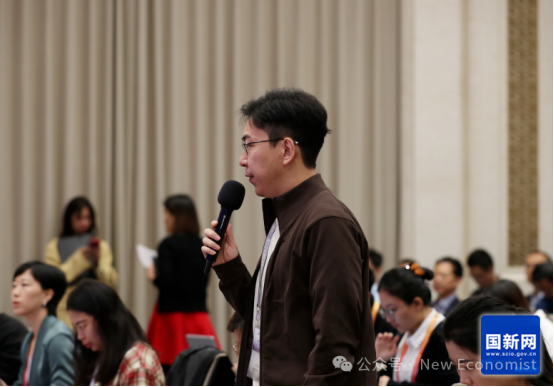
Economic Daily reporter:
In the past period of time, Central Huijin Company has significantly increased its holdings of ETFs. What is the view of the China Securities Regulatory Commission? thank you.
Wu Qing:
Thank you for your question. The capital market is a highly transparent market. Everyone can see that in the past period, Central Huijin Company has continued to increase its holdings in ETFs, fully reflecting the high recognition of the investment value of the A-share market by national investment institutions. It can be said that it has played a very important role in stabilizing the market and boosting confidence. We have noticed that many investment and research institutions both domestically and internationally believe that the valuation of the A-share market is at a historical low, highlighting its investment value. The China Securities Regulatory Commission will work with relevant parties to further support Central Huijin Company in increasing its holdings and expanding its investment scope, and promote the investment of various medium and long-term funds, including Central Huijin Company, in the stock market. Just now, Director Yunze also mentioned the relevant arrangements to support insurance companies' entry into the market. We will actively support various types of funds, including insurance funds, to increase their entry into the market and provide a better policy environment. Further enhance the strategic reserve force and work together to promote the stable and healthy development of the capital market. thank you.
Shou Xiaoli:
The press conference has been going on for an hour and a half, due to time constraints, the last question.
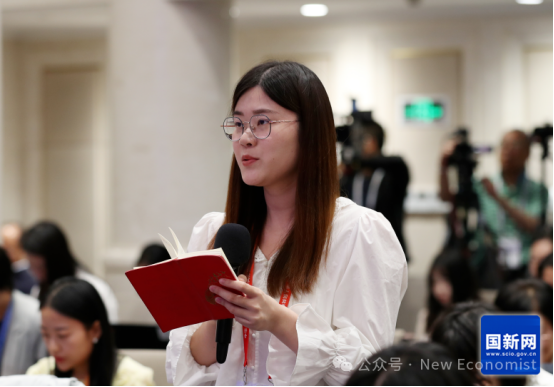
Financial Times reporter:
What are the main considerations for creating securities fund insurance swap facilities and special refinancing support for listed companies to repurchase and major shareholders to increase their holdings of stocks? How will the central bank carry out its operations? thank you.
Pan Gongsheng:
Thank you for your question. In order to maintain the stability of China's capital market and boost investor confidence, based on international experience and the People's Bank of China's own past practices, the People's Bank of China has negotiated with the China Securities Regulatory Commission and the State Administration of Financial Regulation to create two structural monetary policy tools to support the stable development of the capital market. This is also the first time that the People's Bank of China has innovated structural monetary policy tools to support the capital market.
The first tool is the convenience of exchanging securities, funds, and insurance companies. This work supports eligible securities, funds and insurance companies. These institutions will be determined by the CSRC and the State Administration of Financial Supervision in accordance with certain rules. They can use their bonds, stock ETFs, Shanghai and Shenzhen 300 constituent shares and other assets as collateral to exchange treasury bond bonds, central bank bills and other highly liquid assets from the central bank. Compared with other assets held by market institutions, treasury bond and central bank bills differ greatly in credit rating and liquidity. Many institutions have assets in hand, but their liquidity is relatively poor in the current situation. By exchanging with the central bank, they can obtain high-quality and highly liquid assets, which will greatly enhance their ability to obtain funds and increase their stock holdings. We plan to exchange convenience with an initial operational scale of 500 billion yuan, and expand the scale in the future depending on the situation. I told Chairman Wu Qing that as long as this matter is done well, the first installment of 500 billion yuan can be increased by another 500 billion yuan, and even a third 500 billion yuan can be made. I think it's all possible and open. The funds obtained through this tool can only be used for investing in the stock market.
The second tool is stock repurchase and refinancing. This tool guides commercial banks to provide loans to listed companies and major shareholders for repurchasing and increasing their holdings of listed company stocks. In fact, it is a very common transaction in the international capital market for shareholders and listed companies to repurchase or increase their holdings of company stocks. The central bank will issue re loans to commercial banks, with a funding support ratio of 100% and a re loan interest rate of 1.75%. The loan interest rate issued by commercial banks to customers is around 2.25%, which can be increased by 0.5 percentage points. The interest rate level of 2.25% is currently very low. The initial quota is 300 billion yuan. If this tool is used well, Chairman Wu Qing and I have also mentioned that an additional 300 billion yuan, or even a third 300 billion yuan, can be added. But we need to look at the market situation later and make some evaluations. This tool is applicable to listed companies of different ownerships such as state-owned enterprises, private enterprises, and mixed ownership enterprises. We do not distinguish ownership. The People's Bank of China will closely cooperate with the China Securities Regulatory Commission and the State Administration for Financial Regulation, and also require the cooperation of market institutions to jointly do this job well.
Thank you everyone!
Shou Xiaoli:
Thank you to the three publishers, thank you to all the journalist friends for participating. That concludes today's press conference.










